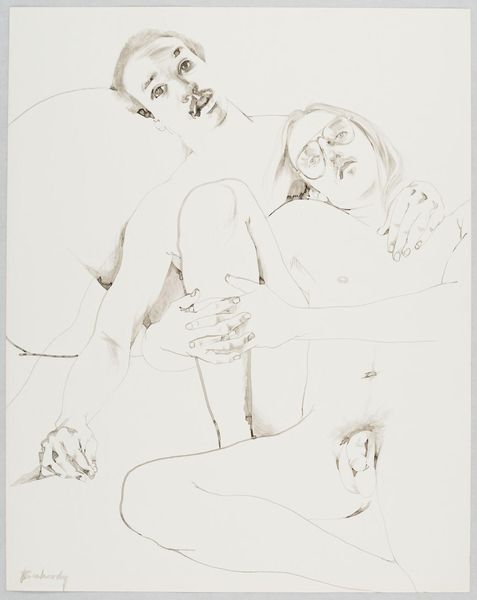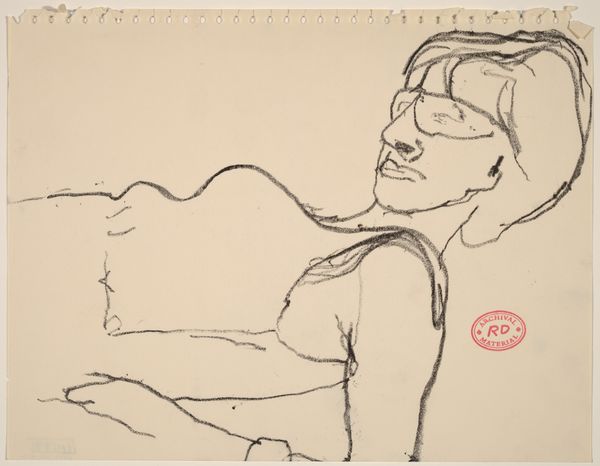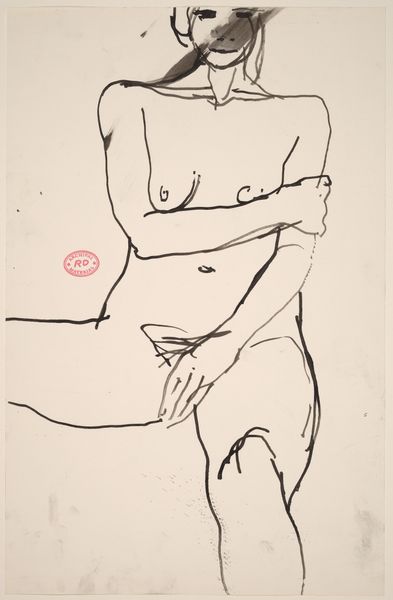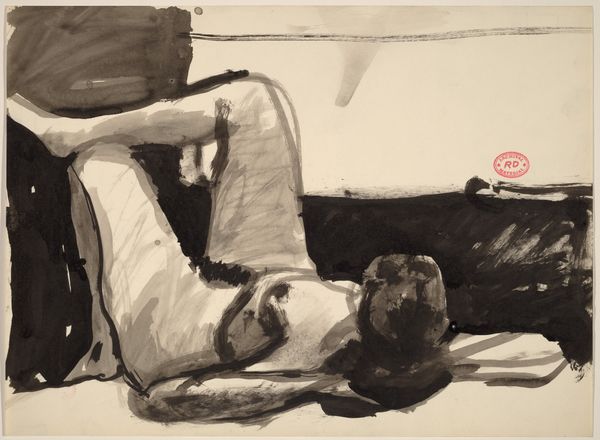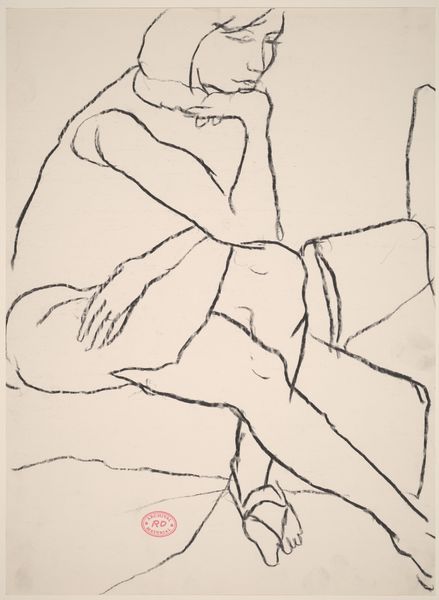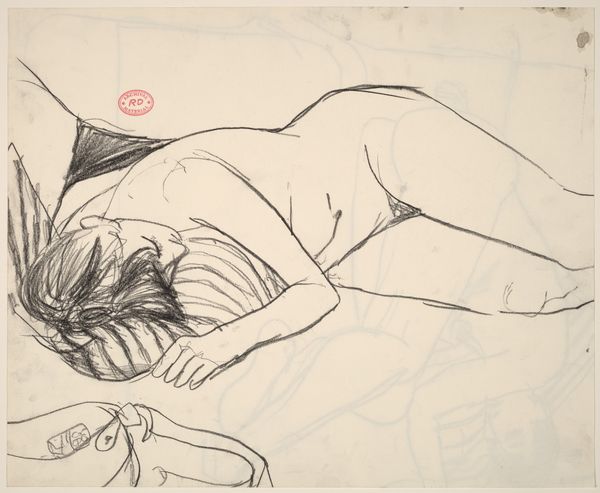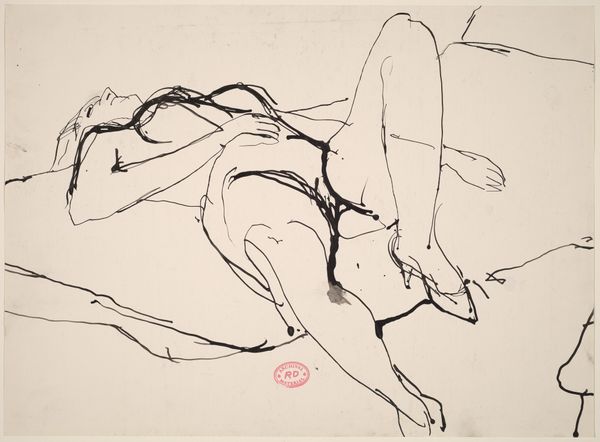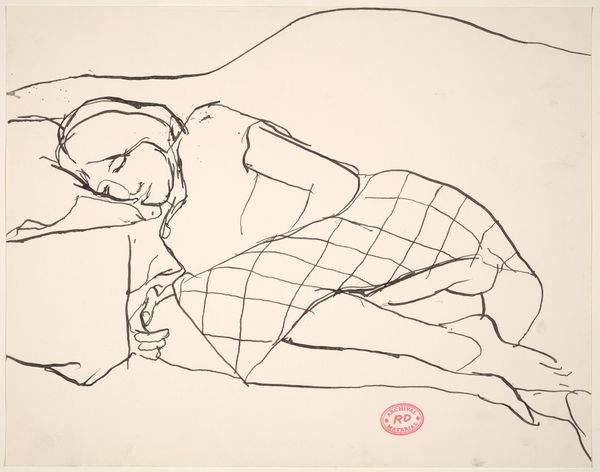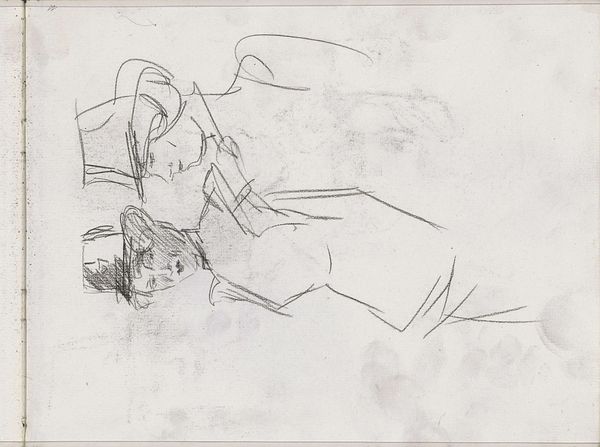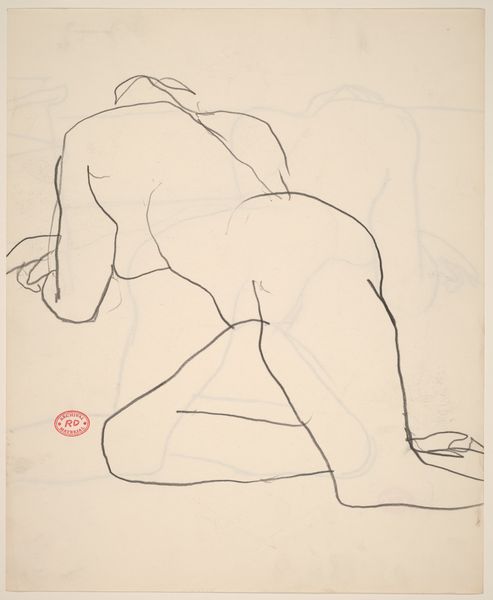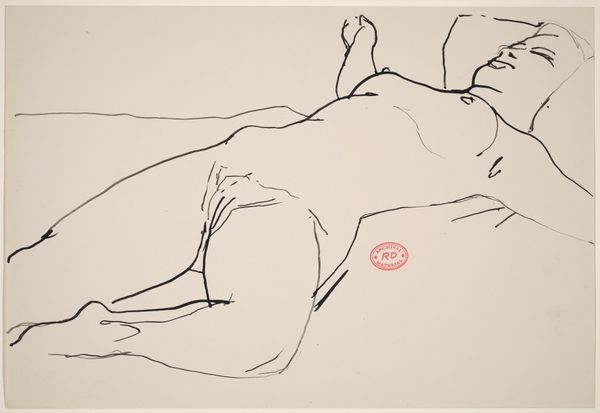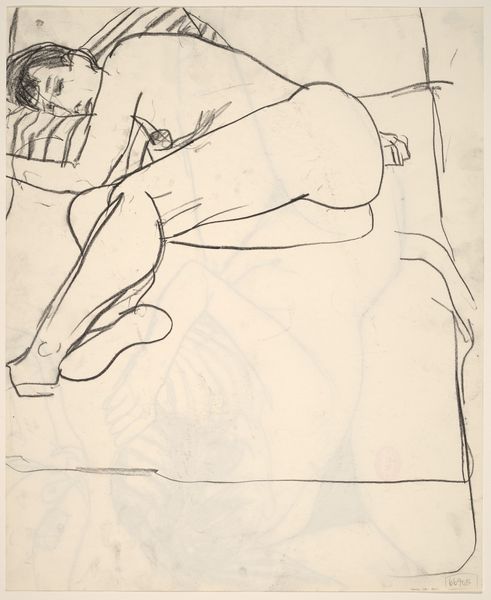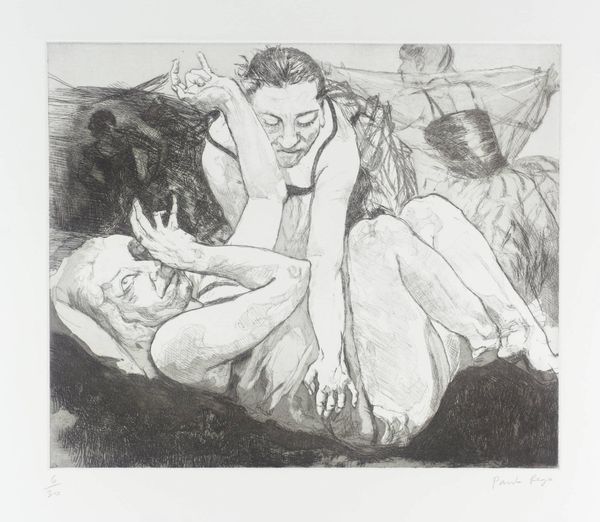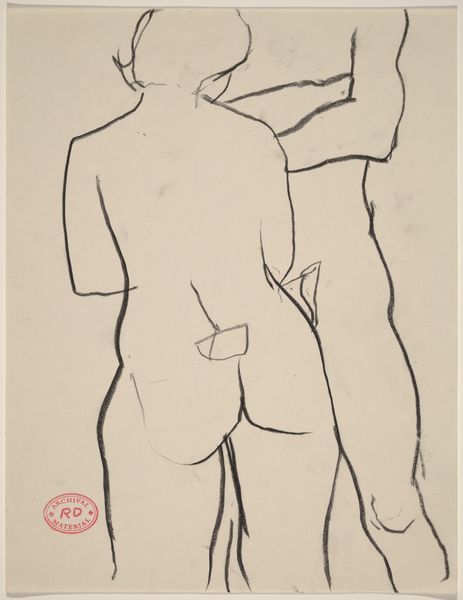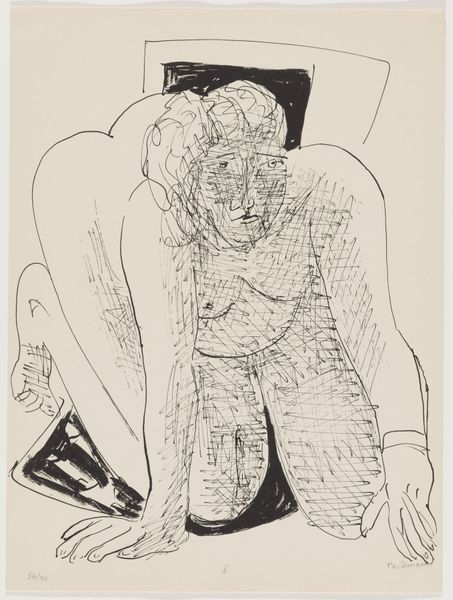
Dimensions: unconfirmed: 350 x 500 mm
Copyright: © The estate of Angus Fairhurst | CC-BY-NC-ND 4.0 DEED, Photo: Tate
Editor: So, this is Angus Fairhurst's "Pietà (first version)". It's a photograph. The juxtaposition of the figure in the gorilla suit holding a human feels both tender and… well, slightly absurd. What do you make of that combination? Curator: Absurdity is key! Fairhurst's work often plays with expectations. Think of the Renaissance Pietà – Mary cradling Jesus. Now, imagine that with a gorilla. Is it mocking sentimentality? Perhaps. Or maybe suggesting even primal figures grieve. What do those strange patches on the figure's torso suggest to you? Editor: I hadn’t even noticed them at first; now they’re all I see. The Pietà is a potent image, but this photo feels strangely flat, too. Curator: Absolutely, and that tension, that space in between, is pure Fairhurst. It's about disrupting narratives and embracing the unexpected. It's funny and quite moving. Editor: I agree! It really reframes the classic image and offers us something new to consider.
Comments
tate 7 months ago
⋮
http://www.tate.org.uk/art/artworks/fairhurst-pieta-first-version-p79794
Join the conversation
Join millions of artists and users on Artera today and experience the ultimate creative platform.
tate 7 months ago
⋮
Pietà (first version) is a photograph of the artist, naked and slumped over the arms and lap of a stuffed gorilla suit that is sitting on a sofa covered with a white drape. The artist lies with his head thrown back and his eyes closed, gripping the camera’s cable release in his right hand. The title of the work derives from the famous Pietà 1499 (St. Peter’s Basilica, Vatican City) by Michelangelo (1475–1564), and its composition mimics the pose of the dead Christ in the arms of Mary in Michelangelo’s sculpture. The photograph was taken in the studio that Fairhurst and his former partner, the artist Sarah Lucas (born 1962), hired in 1995 in Clerkenwell Road, London EC1. The curator Gregor Muir has recalled that: ‘here, they cleared space in the centre of the room to take photographs, sometimes resulting in one artist’s work appearing in the other’ (In-A-Gadda-Da-Vida, p.92). A small portion of one of the large Pietà prints appears in the background of Lucas’s Black and White Bunny #1 1997 (P78227). Fairhurst produced three different versions of Pietà during 1996. As its title indicates, the one presented here is the first version of the better known upright Pietà 1996 (reproduced in In-A-Gadda-Da-Vida, p.92) which Fairhurst made later in the same year, and it was shot at a different location in his studio.
